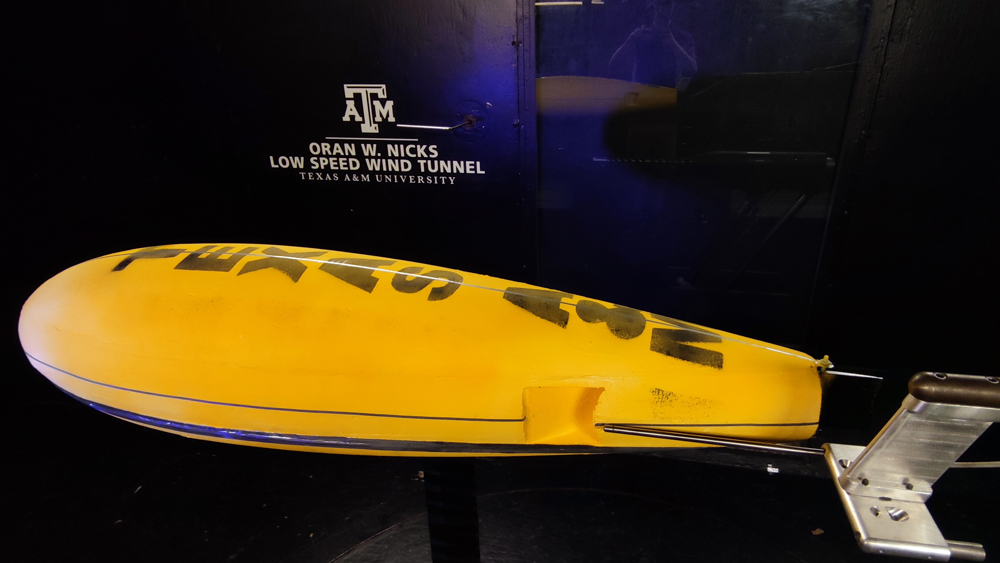
The Human Powered Submarine team has taken students in the Department of Ocean Engineering at Texas A&M University across the world and to new depths for nearly 30 years.
This unique student organization challenges participants to construct a submarine powered by a single diver to enter in the international submarine races held at either the Maryland Naval Base or in Gosport, England.
Though the COVID-19 pandemic caused the team to have to quickly adapt and find ways to host remote meetings and solve problems from afar, they are overcoming challenges and evolving to offer more opportunities to current and future students. This includes adding an electric boat competition to introduce emerging technology elements to their group.
“The way we have pitched the addition of the electric boat is that people can join the submarine team as a whole and can work on which projects they want,” said James Frizzell, ocean engineering senior and leader of the Human Powered Submarine team. “I want the submarine team to expand to be like the Texas A&M SAE team, with its submarine and electric boat. The more, the merrier.”
Frizzell joined the organization as a sophomore in fall 2019. The following spring, COVID-19 shut down the Texas A&M campus and the international submarine competitions – just as the team was working on installing the control systems for their design.
The pandemic presented immediate challenges for the team: they couldn’t meet in person, they couldn’t compete and they couldn’t go to campus to work on the submarine as spaces were shut down for health and safety for several weeks. But that didn’t deter the students, who put together a Microsoft Teams group to work on design elements for the new submarine.
“We spent all last year designing a new submarine to compete in races,” Frizzell said. “I’d say we got fairly far. There are still little details, like the attachment for the pedal box and control surfaces, but the general idea behind what the propulsion will be has been thought of and designed.”
Frizzell explained that while the team has made progress with its concept, it has struggled with attendance among new recruits who joined the organization looking for hands-on construction experience.
To help combat this lack of tangible output, the team reached out to the low-speed wind tunnel near the Easterwood Airport in College Station and asked to test a new design. With their agreement, a one-third-scale model of the submarine was created and tested. Another test will be conducted in early spring.
“We drew a lot of attention when we were pitching the organization at the end of the semester to classes and mentioned the new electric boat competition,” Frizzell said. “There's a lot that goes into the submarine. And it's very difficult to design, plus all the logistics. But people are familiar with boats.”
Frizzell said he is excited to see both products of the team come together as the various components arrive. Little by little, construction is beginning on various aspects of the electric boat and human-powered submarine as the team prepares for competition in Maryland at the end of the spring semester.
“For a lot of people, this is their first time actually working in computer design, and then it's also hands-on,” he said. “These are tools that you're going to use throughout your life and getting to experience what it's like building something like this while at university gives you a chance to learn in a way you can't in a classroom environment.”